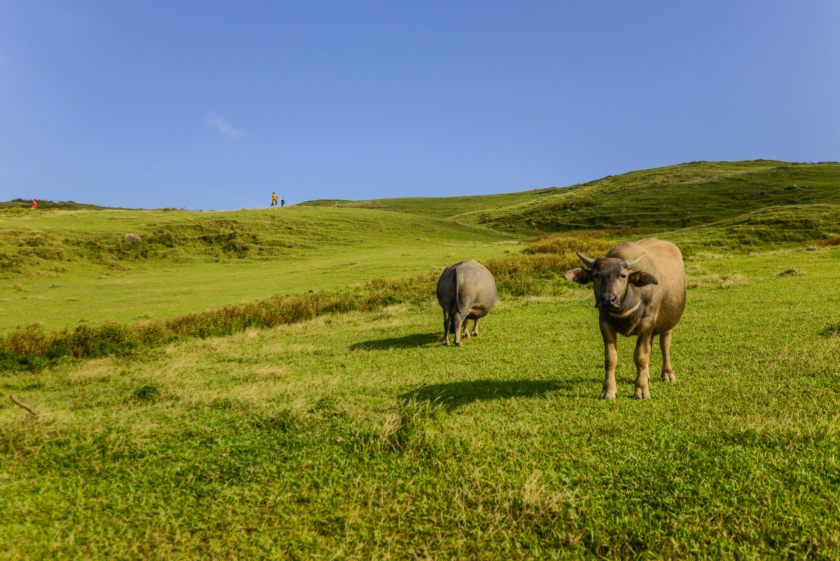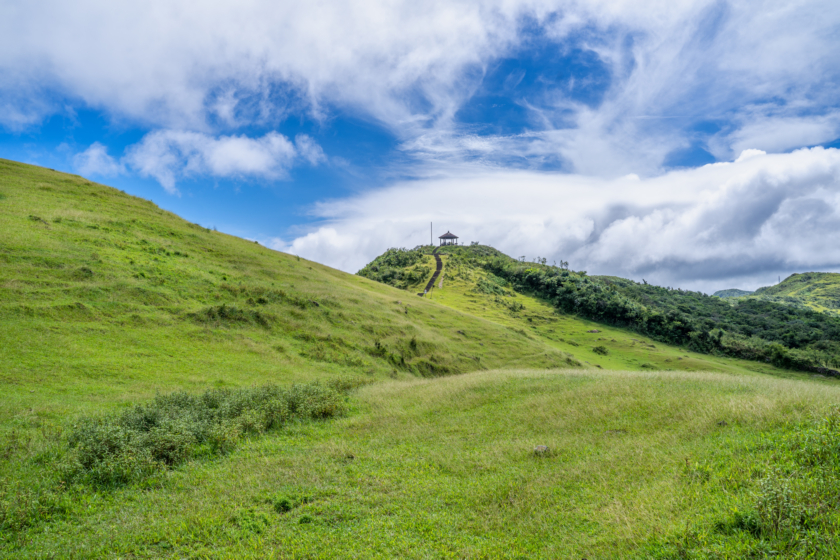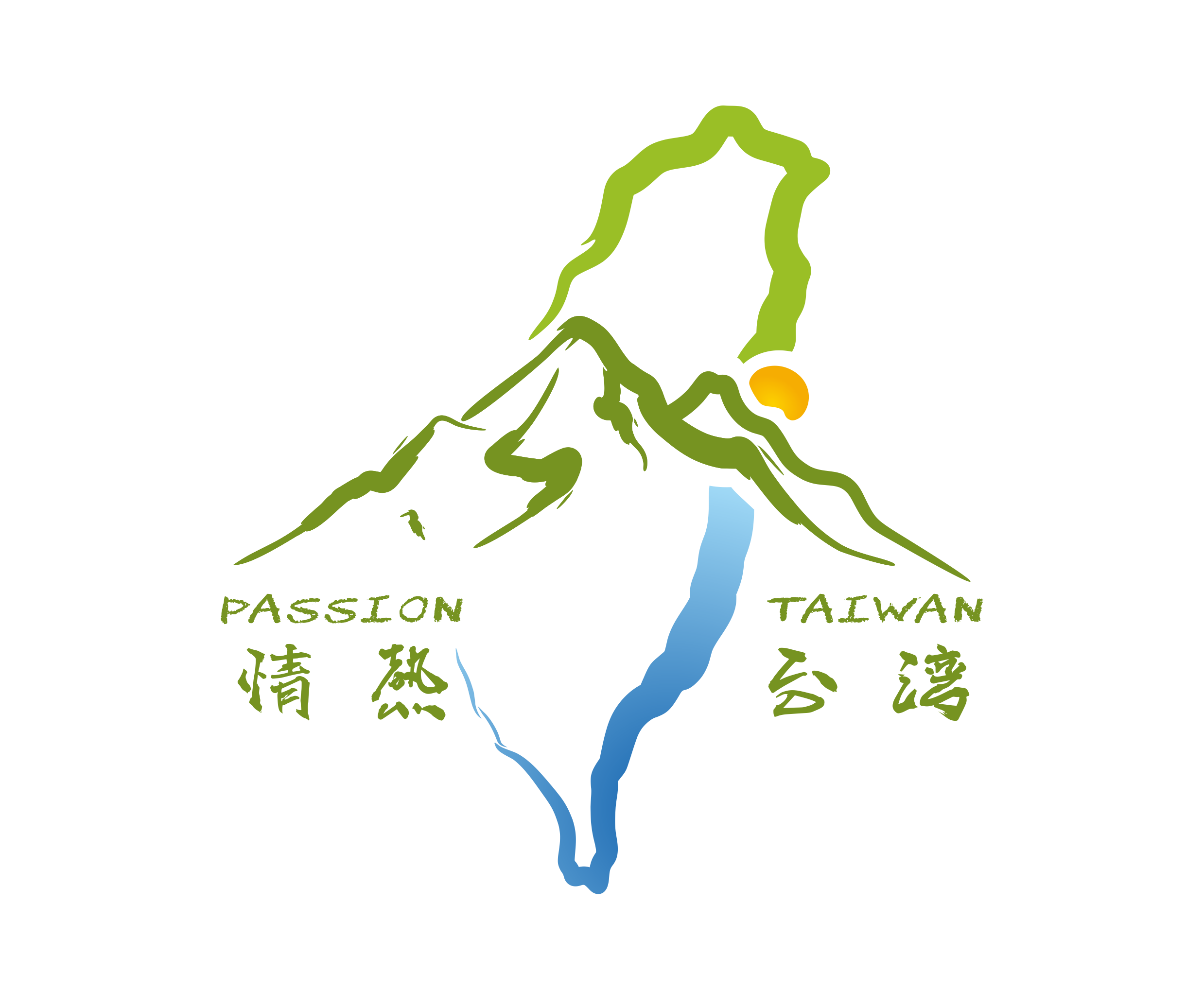The sky is boundless and blue; The wilderness is vast and endless. The wind blows, the grass bends low, and the cattle and sheep show.
Hidden between Gongliao in New Taipei City and Toucheng in Yilan, Taoyuan Valley, famously mentioned in Tao Yuanming’s “Peach Blossom Spring,” lies nestled at the end of the Xueshan Mountain Range, facing the sea with mountains at its back, at an altitude of only 542 meters, forming a cuesta. Away from the hustle and bustle, the deep blue Pacific Ocean stretches out beneath, unfolding vast green meadows, hence earning the title of “Shi Wai Tao Yuan”, which means Never-Never Land in English.
Walking along the mountain paths, one first encounters Wankengtou Mountain, one of the top hundred famous mountains. Cool breezes sweep in from the sea, and upon reaching the summit, one can see the emerald-green Guishan Island in the distance, resembling a jade turtle head, nestled amid the vast sea under the azure sky. The gently sloping grassy hillside, once a grazing ground for residents and formerly known as “Da Niu Bu,” resembles flattened matcha scones.
The trails are built along the mountain ridge, rich with subtropical greenery and fragrant grasses, forming a varied green corridor. In late autumn, the air is alive with the chirping of insects and birds, while eagles gracefully soar through the sky. A few cows leisurely gather by the ponds, adding to the tranquil scene. With the gentle breeze and warm sunshine, the flowers sway as if dancing in the late autumn air, inviting people to come and visit.

4 trails leading directly to Taoyuan Valley:
The longest and gently sloping route, “Cao Ling,” stretches 8.5 kilometers. 5 kilometers long, “Da Xi,” starting from Toucheng Da Xi Riverside Park, requires climbing skills due to its steep ascent of five hundred meters. “Shi Guan Yin,” 3.5 kilometers long, has a comparable steepness to “Da Xi.”
The most popular among travelers is “Nei Liao,” with gentle slopes and beautiful scenery, only 1.7 kilometers long, suitable for all ages. The name “Nei Liao” dates back to the Guangxu period of the Qing Dynasty when the Xiao family from Quanzhou settled here and named it “Zhang Liao” due to its inland location.
Recommended Route: Gongliao Water Terrace, Memories of Life in The Mountains.
Mountains are like waves that congeal.
Zheng Chouyu, the poet, likened mountains to frozen waves. Indeed, the essence of both mountain and sea is akin. On the opposite side of Gongliao Mountain, lush slopes are adorned with meandering streams, and the emerald-colored terraces resemble the shimmering waves of the sea. Unlike the dry, fertile plains that nurture rice paddies, the soft wetlands here retain water year-round, preventing river floods and nurturing lively, organic paddy fields that seem to harmonize effortlessly with the world.
Farmers in Gongliao often reminisce, “The mountains were once covered in paddy fields, always watery.” The mountain villages are adorned with golden waves of rice and lush greenery. However, in years past, much of this land lay abandoned. Our ancestors eked out a living by cultivating ‘Malan,’ a plant used for indigo dyeing, leaving little room for rice paddies, which were solely for their own sustenance.

In 2011, the “Water Terraces and Wetland Restoration Project,” led by the Forestry Bureau, reclaimed approximately seven hectares of farmland. Since then, it has served as a demonstration site along with the New Taipei Ba Yan Tribe and Feng Bin Harbor Tribe, aiming to create a homeland where mankind and nature can harmoniously coexist.
The circular ripples created by the water terraces along contour lines resemble mirrors, sustaining the villages and nurturing the creatures of the earth. Various freshwater creatures in the wetland, such as the yellow-bellied frog, water mantis, eel, water snake, and endangered aquatic plants, were among the first to appear in the re-cultivated fields. According to the latest statistics from 2020, as many as 811 species have been documented in the Gongliao Water Terraces and surrounding forest waters. This biodiverse ecosystem is like an ecological version of Noah’s Ark, attracting numerous groups of students who come to learn.
The flourishing paddies also attract bees. The forests of Gongliao Mountain have lots of nectar-producing plants, and is like a backyard garden for these bees. Farmers also double as beekeepers, with the honey harvested from flowers infusing the mountain village with a rich, sweet scent. This mutually beneficial arrangement, revitalizing traditional agricultural practices while promoting ecology and eco-tourism without disrupting forest ecosystems, has led to the Gongliao Water Terraces being recognized as a member of the “Satoyama Initiative” association.
[The Satoyama Initiative]
The Satoyama Initiative was co-initiated by the Japan Ministry of the Environment and UN (UNI-IAS) at the 2010 Convention on Biological Diversity Conference held in Nagoya, Japan. It aims to strike a balance between humans and nature by utilizing agriculture, forestry, and fishery. Hundreds of members including local government, communities, and NGOs have joined this network, also nearly 20 members in Taiwan (i.e. National Dong Hwa University and Taiwan Wild Bird Federation) have actively engaged in the Satoyama Initiative.
